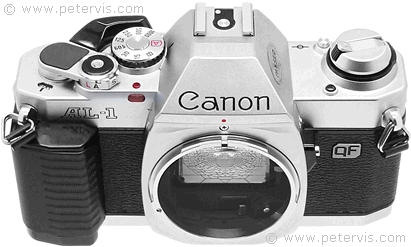Canon AL-1 QF Technology
Canon’s focus detection system was a new technology, and one noticeable feature was the reflex mirror having a computer-generated pattern of lines. The focus detection mechanism was behind this reflex mirror and therefore they had to find a way to allow a small amount of light to bleed through the mirror for the sensors without adversely affecting the viewfinder display. The lines are extremely thin and semitransparent; hence, they are not visible through the viewfinder.
Behind the reflex mirror, there is a smaller mirror, which the service manual indicates as the "sub mirror", and this component reflects the light down to the contrast sensors.
CCD Contrast Sensors

The invention of the charge-coupled device (CCD) technology occurred in the 60s. It involves semiconductor theory, and its basic principle of operation is to detect light energy in the form of photons. When connected to an electrical circuit, the voltage produced, is proportional to the amount of photons falling upon the sensor area. An analogue to digital converter (ADC) can then convert the voltage level to a digital value, which a microcontroller can then use within an algorithm to determine the highest value.
When an image is in focus, it has the highest contrast level, and therefore the detection of best focus is simply determining the highest contrast. A microcontroller running a simple algorithm can perform this type of determination.
This Article Continues...
Canon AL-1Canon AL-1 QF
Canon AL-1 Review
Canon AL-1 Price / eBay
Canon AL-1 QF Technology
Canon AL-1 Battery
How to Use Canon AL-1
Canon AL-1 Mount and Lenses

